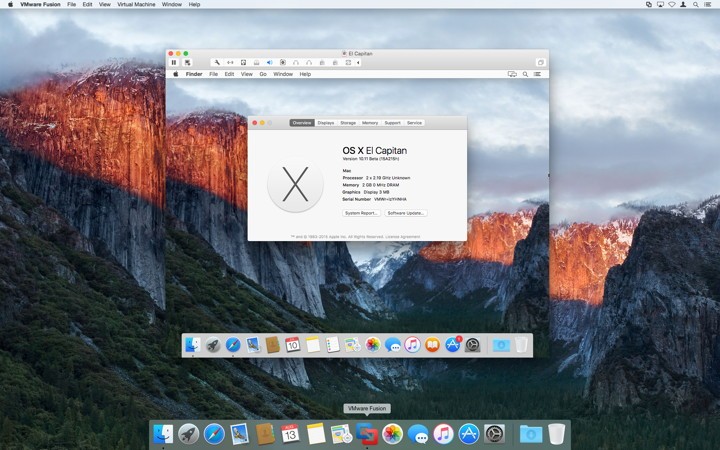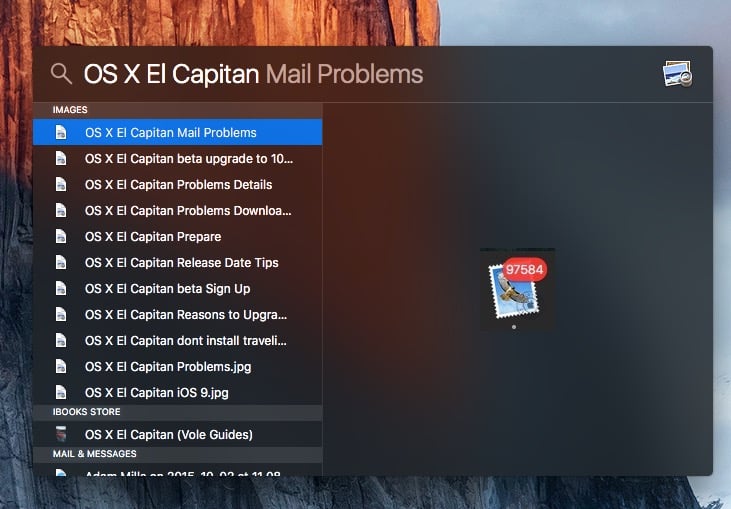Microsoft Edge For Mac Os El Capitan
The new Mac OS X build, named “El Capitan” after the iconic Yosemite National Park rock formation, will arrive this fall and is full of performance and user interface updates. Apple and Microsoft are not the best of friends, so you’d be forgiven for giving the new Edge web browser a miss on the Mac. But when we put it through its paces, we found it to be an excellent. How to Use Internet Explorer 11 in Mac OS X with IE Tech Preview. This will work to run IE 11 on any version of OS X that Remote Desktop is compatible with, we’re demonstrating here with OS X El Capitan but it will work with Mavericks, Yosemite, Snow Leopard, etc too.
Installation and Use Rights.For installation and use of the Software on any non-Windows platform, including but not limited to macOS and Linux, you may install and use one copy of the Software on any device running such non-Windows platform. It can disappear until you move the pointer to the edge to call it forth. You can resize it. Dig those crazy icons. By default, El Capitan always displays at least one icon on your Desktop: your Mac’s internal drive. To open a drive and view or use the contents, you double-click the icon. Windows 10 is arriving sooner than El Capitan. It is getting released on 29 th July, 2015 while the release date of El Capitan is not exactly known. It is announced to be available this fall. Windows 10 would ship with Microsoft’s new browser; Edge; which is expected to perform well after all the criticism Internet Explorer has.
Windows Migration Assistant transfers your contacts, calendars, email accounts, and more from a PC. It migrates this data to the appropriate places on your Mac. After migrating data to your Mac, authorize your computer for iTunes Store purchases. It’s important to authorize before you sync or play content that you download from the iTunes Store.
If you're migrating from one Mac to another Mac, follow the steps to move your content to a new Mac.
Before you begin
To prepare for a smooth migration:
- Make sure that Windows is up to date. Migration Assistant works with Windows 7 and later.
- Make sure that you know the name and password of an administrator account on your PC.
- Connect your Mac and PC to the same network, such as your home Wi-Fi network. Or connect an Ethernet cable between the ports on your Mac and PC to create a direct network connection. Some Mac models require an Ethernet adapter, such as the Belkin USB-C to Gigabit Ethernet Adapter or Apple Thunderbolt to Gigabit Ethernet Adapter.
- If you're using Microsoft OneDrive on your PC, follow Microsoft's instructions for uninstalling OneDrive before continuing. You can reinstall OneDrive after migration is complete.
Then use the check disk (chkdsk) utility on your PC to make sure that your Windows hard drive doesn’t have any issues:
- Right-click the Start button, then click Run.
- Type
cmdand press Enter. Command Prompt opens. - At the prompt, type
chkdskand press Enter. - If the utility reports that it found problems, type the following, where drive is the letter that represents your Windows startup disk, such as D:
- Press Enter.
- At the prompt, type
Y, then restart your PC. - Repeat this process until the check disk utility reports no issues. If the utility can't fix every issue that it finds, you might need to have your PC serviced. Then migrate your data to your Mac.
Move your data
This section guides you through migration, post-migration, and what to do if the steps don’t work for you.
Microsoft Edge Mac Os El Capitan
How to move your information from a PC to your Mac

- On your PC, download and install the appropriate Windows Migration Assistant, based on the version of macOS on your Mac:
- Windows Migration Assistant for macOS Big Sur
- Windows Migration Assistant for macOS Mojave and macOS Catalina
- Windows Migration Assistant for macOS Sierra and High Sierra
- Windows Migration Assistant for OS X El Capitan or earlier
- Quit any open Windows apps.
- Open Windows Migration Assistant, then click Continue.
- Start up your Mac. Setup Assistant automatically opens the first time you turn on your Mac. If you’ve already set up your Mac, open Migration Assistant, which is in the Utilities folder of your Applications folder.
- On your Mac, follow the onscreen prompts until you get to the migration pane of the assistant. Select the option to transfer your information “From a Windows PC,” then click Continue.
- When prompted, enter an administrator name and password.
- Click Continue to close any other open apps.
- In the migration window on your Mac, select your PC from the list of available computers. Then wait for the PC to show the same passcode that your Mac shows.
- When both computers display the same passcode, click Continue on your PC and Mac.
- Your Mac scans the drives on your PC to build a list of information to migrate. When the scan completes, select the information that you want to migrate to your Mac and click Continue. Learn about some of the data that you can transfer.
You can watch the progress and estimated time remaining on both the PC and your Mac. They tell you when migration is complete.
After you move your data
When migration completes, close Windows Migration Assistant on your PC. Then log in to the new user account on your Mac. The first time you log in to a user account migrated from your PC, you’re asked to set a password. You can use the same password that you used on your PC, or create a new password.
After logging in to the user account that you migrated, authorize your computer for iTunes Store purchases. It’s important to authorize before you sync or play content downloaded from the iTunes Store.
If you have issues moving your data
- Quit all open apps on your PC, then try migrating your content again. For example, you can press Alt-Tab to choose an open application, then press Alt-F4 to quit it.
- If your PC doesn't appear in the Setup Assistant or Migration Assistant window on your Mac, make sure the computers are connected to the same network. You can create a network by connecting a single Ethernet cable between your Mac and PC. If that doesn't help, check for firewall software on your PC and turn it off. After migration completes, you can turn firewall software on again.
- If Migration Assistant doesn’t open on your PC, turn off any antivirus software on your PC. Then try to open Migration Assistant again. After migration completes. You can turn that software on again.
- If you still can't migrate your information successfully, you can use an external drive or file sharing to manually copy important data to your Mac.
What data can I transfer?
Migration Assistant lets you choose the data to move to your Mac. Here’s what moves over for specific apps and data types:
Email, contacts, and calendar information
/mcse-2016-70-740-cbt-nuggets-download-torrent-free.html. Email messages, email-account settings, contacts, and appointments move based on which version of Windows you're using and which accounts you have.
Outlook1
Data from 32-bit versions of Outlook in Windows 7 and later move as follows:
- People move to Contacts2
- Appointments move to the Calendar app
- IMAP and Exchange settings and messages move to the Mail app
- POP settings and messages move to Mail2
Windows Live Mail
Data from Windows Live Mail in Windows 7 and later moves as follows:
- IMAP settings and messages move to Mail
- POP settings and messages move to Mail2
Windows Mail
Data from Windows Mail in Windows 7 and later (excluding Windows 8) move as follows:
- IMAP settings and messages move to Mail
- POP settings and messages move to Mail2
- People move to Contacts
Bookmarks
Bookmarks from Internet Explorer, Safari for Windows, and Firefox move to Safari.
Microsoft Edge For Mac Os El Capitan Version
System settings
Language and location settings, and custom desktop pictures move to System Preferences. Your web browser homepage moves to Safari preferences.
Pictures
Photos and other images move to your home folder. You can then add them to Photos, or open Photos and let it search your Mac for photos to import.
iTunes content
Migration Assistant transfers your iTunes media as follows: music to the Apple Music app, videos to the Apple TV app, podcasts to the Apple Podcasts app, and audiobooks to the Apple Books app.
Other files
Migration Assistant also moves these files:
- Files from the top-level folder of the currently logged-in user’s home directory
- Non-system files located in the Windows or Program Files folders
- Top-level folders located on the Windows system disk and other attached disks
1. Migration Assistant doesn’t support 64-bit versions of Outlook. You can manually migrate Mail, Contacts, or Calendars from Outlook 2013 or Outlook 2016 by signing in and entering the content on your Mac manually.
2. Migration Assistant transfers only the Mail or Contacts data that belongs to the logged-in Windows user. To transfer data from another user account, use Migration Assistant again while you’re logged in to another Windows account. Each time you migrate, your Mac creates a new user account.
Your ADP service is supported or certified on the following browsers and operating systems.
Pop-up and cookie-blocking software must be disabled. If fire wall software is used, permit inbound and outbound traffic on port 443.
For optimal performance, ADP recommends clients upgrade to the most recent versions of Firefox and Chrome. Clients not using the latest versions of these browsers may experience performance and rendering issues. The following list shows the supported browsers and operating systems.
·Microsoft® Internet Explorer®
–Version 11 on Microsoft Windows® 7 SP1 (32 and 64 bits), Microsoft Windows® 8.1, and Microsoft Windows® 10.
·Microsoft® Edge® *
* The Edge browser does not support ActiveX controls. On-Site Printing (OSP) and manual check printing functionality will not work with the Edge browser. Windows 10 includes IE 11, which can be used for OSP and manual check printing.
·Mozilla® Firefox®
–ADP supports version 60 and higher on Firefox on Microsoft Windows® 7 SP1 (32 and 64 bits), Microsoft Windows® 8.0 (32 and 64 bits), Microsoft Windows® 8.1, Microsoft Windows® 10, Apple® Mac OS® El Capitan, and Apple® Mac OS® Sierra.
·Apple® Safari®

–Versions 11 and 12 on Apple® Mac OS® Sierra.
·Google Chrome™
–ADP supports version 63 and higher on Chrome on Microsoft Windows® 7 SP1 (32 and 64 bits), Microsoft Windows® 8.0 (32 and 64 bits), Microsoft Windows® 8.1, Microsoft Windows® 10, Apple® Mac OS® El Capitan, and Apple® Mac OS® Sierra.
Touch screens are not supported or certified by ADP.
For ADP Workforce Now Enhanced Time clients, Chrome is a supported browser for Enhanced Time v8.0 only. For Legacy versions of Enhanced Time v7.0 and lower, Chrome is not a supported browser. Please contact your Enhanced Time support team if you have questions or need assistance with version verification.
For the best possible user experience, ADP recommends a minimum screen resolution of 1280 x 800. Screen resolutions smaller than this will still work, but will require horizontal scrolling in some cases.
Minimum Bandwidth Requirements
We are continually working to improve response time and performance in ADP Workforce Now. Your experience will vary based on your hardware, operating system, browser, internet service provider, available bandwidth, and local configuration. Some software, such as your security programs, will also affect response time. Clearing your cache may affect performance.
Updated: July 13, 2019